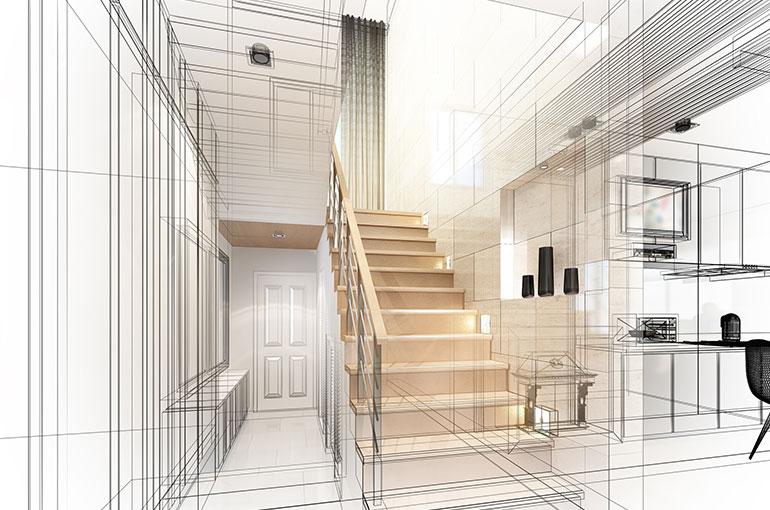A Detailed Overview of Architectural Styles and Their Influence on Modern City Planning and Development
Architectural styles have long worked as a mirror to the societal values and technological developments of their time, playing a vital function fit modern-day city preparation and advancement. From the magnificence of Neoclassicism to the practical technique of Brutalism, each design has introduced distinct concepts that influence city visual appeals and functionality. As contemporary obstacles emerge, consisting of sustainability and neighborhood requirements, comprehending these historical frameworks comes to be crucial. The resulting dialogue not just educates future style practices but additionally elevates essential concerns about the balance in between heritage and advancement in our developing urban landscapes.
Historic Overview of Architectural Styles

As cultures transitioned with the Middle Ages, Gothic style arised, defined by its verticality and elaborate detailing, matching the spiritual ambitions of the era. The Renaissance noted a rebirth of classic ideals, combining art and design in innovative manner ins which affected subsequent designs across Europe.

Today, architectural designs remain to develop, driven by globalization and sustainability worries, mirroring a dynamic interplay in between heritage and innovation. This historical review underscores the importance of style as a mirror of social evolution and as a driver for city growth.
Key Architectural Styles Explained
The diversity of building designs mirrors the myriad impacts that shape our built atmosphere, each symbolizing distinctive features and social significances. Secret architectural styles include Classic, Gothic, Baroque, Innovation, and Postmodernism, each standing for one-of-a-kind historic contexts and visual philosophies.
Classical architecture, rooted in ancient Greece and Rome, emphasizes symmetry, proportion, and using columns (cda architects). In contrast, Gothic architecture, thriving between Ages, is defined by pointed arches, ribbed vaults, and flying buttresses, creating a heavenly high quality in cathedrals. Baroque architecture, emerging in the 17th century, is marked by splendour, elaborate embellishment, and a dynamic interplay of light and shadow
Modernism, which gained energy in the very early 20th century, focuses on function over type, utilizing new products like steel and glass to develop minimal structures. Postmodernism, reacting versus the austerity of Innovation, accepts eclecticism and historical reference, frequently incorporating spirited aspects and irony.

Effect on Urban Preparation
In forming the growth of cities, building designs significantly influence urban planning decisions. The choice of architectural style typically dictates the looks, capability, and total personality of city settings.
In addition, building designs can influence zoning laws and land make use of plans. Urban organizers have to take into consideration the dominating building patterns when developing districts, making sure that new developments harmonize with existing structures. This consideration cultivates natural city landscapes and improves neighborhood identity.
The implementation of specific building designs can likewise influence socioeconomic factors within a city. For instance, premium contemporary designs might bring in upscale locals and companies, leading to gentrification, while extra inexpensive real estate options may prioritize sensible and lasting styles to accommodate varied populations. Ultimately, the interplay in between architectural designs and urban preparation creates vibrant cities that reflect both historic context and contemporary requirements, shaping the lived experiences of their occupants
Sustainability and Modern Architecture
Building designs play a critical duty in dealing with modern challenges, specifically in the realm of sustainability. As metropolitan locations expand and ecological concerns heighten, modern-day architecture significantly embraces sustainable layout concepts that prioritize power performance, resource conservation, and marginal ecological impact.
Contemporary building activities, such as biophilic design and eco-friendly design, supporter for structures that harmonize with their surroundings, making use of all-natural materials and promoting biodiversity. These styles commonly include renewable resource sources, such as photovoltaic panels and wind generators, to lower reliance on nonrenewable fuel sources and lower carbon footprints.
Additionally, the assimilation of innovative technologies, such as smart building systems, enhances energy administration, maximizing source use while making certain passenger comfort. Innovative water management techniques, including rainwater harvesting and greywater recycling, additional contribute to sustainable metropolitan atmospheres.
Notably, sustainability extends Recommended Site past ecological problems; it incorporates social and financial dimensions. By fostering community well-being and advertising inclusivity, modern-day building styles align with sustainable growth objectives. The development of architectural practices proceeds to shape resilient cities that not just satisfy the needs of the existing however likewise guard the future for generations to come.
Neighborhood Interaction in Design
Area interaction in design functions as a vital bridge between engineers and the populaces they serve, making certain that the developed setting shows the needs and desires of its individuals. This joint process welcomes neighborhood participants to add their understandings and preferences, cultivating a sense of possession and obligation towards the areas they live in.
Efficient area interaction uses various approaches, such as workshops, surveys, and public discussion forums, to gather diverse viewpoints. These methods promote a two-way dialogue, enabling engineers to understand neighborhood contexts while empowering citizens to articulate their concerns and wishes. This inclusivity not just enhances the style top quality but likewise advertises social equity by go to website addressing the distinct obstacles faced by marginalized groups.
Additionally, area engagement can result in cutting-edge solutions that might not emerge in a standard layout process. By incorporating neighborhood understanding and social worths, architects can produce areas that reverberate even more deeply with customers, enhancing usability and sustainability. Eventually, focusing on neighborhood involvement in layout procedures results in environments that nurture social interactions, support well-being, and enhance neighborhood ties, consequently playing a crucial duty in forming modern urban landscapes.
Conclusion
Architectural styles have profoundly affected modern-day city preparation and growth, mirroring advancing social and technical contexts. The combination of historical appearances with modern requirements promotes metropolitan environments that prioritize sustainability and community involvement. As cities proceed to expand and adapt, the ongoing Recommended Reading dialogue in between building heritage and contemporary design principles will certainly continue to be essential in creating comprehensive, vibrant spaces that enhance lifestyle and advertise social equity. The future of metropolitan development depend upon this unified balance.